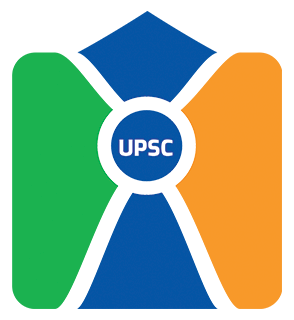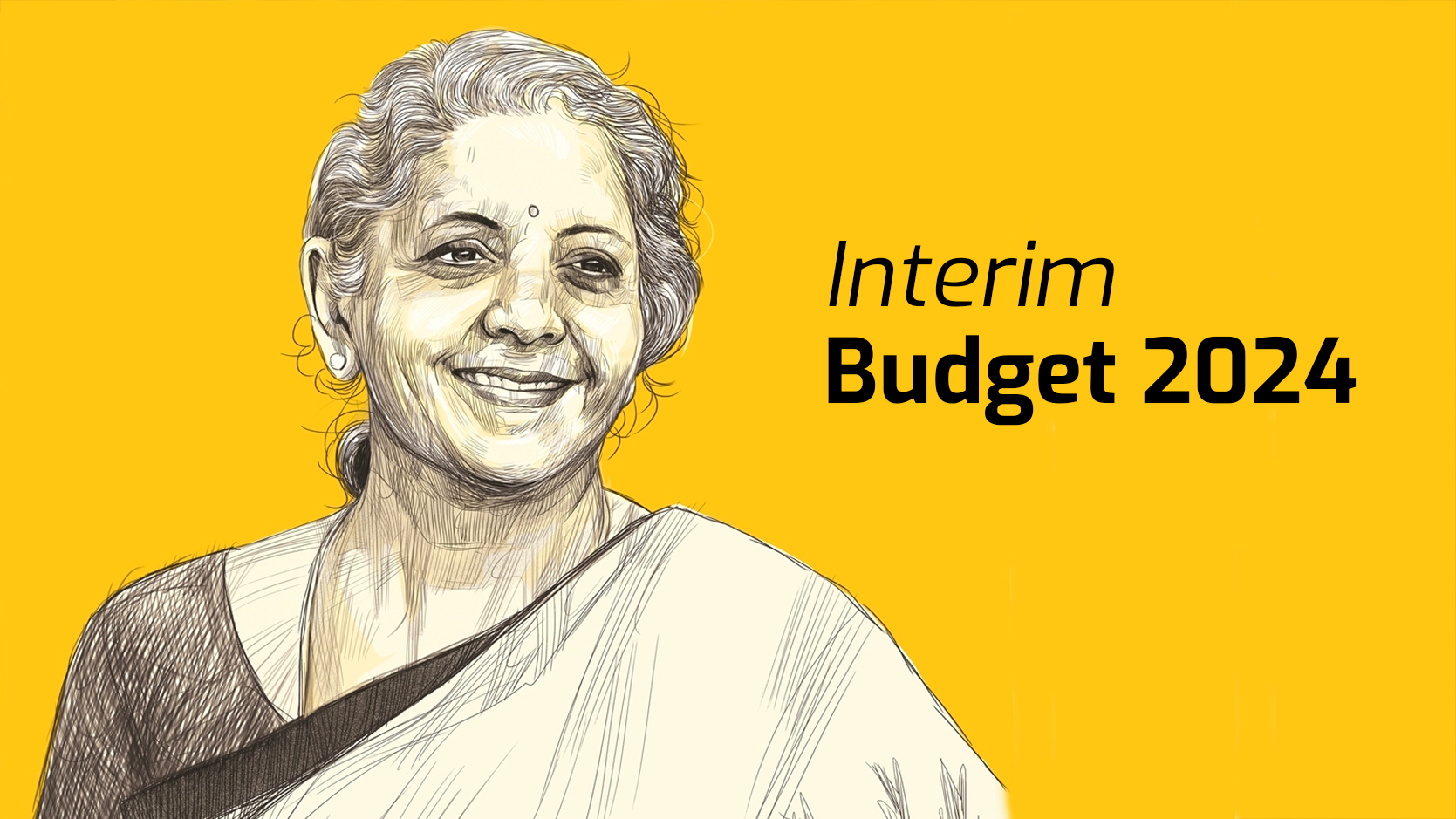A 2024 election result that leaves many astounded
Why in News?
In a time where democratic values are being challenged globally, the 2024 US presidential election serves as a stark reminder of the vulnerabilities inherent in even the most established democracies. Jason Stanley, in his piece “The End of US Democracy Was All Too Predictable,” draws a parallel with the philosophical insights from Plato’s Republic to emphasise how demagogues can rise to power through democratic means, only to eventually subvert the system to establish authoritarian rule. As we analyse the 2024 election, it is crucial to understand how it fits into this broader narrative, as well as its implications for the future of democracy.
Global Context
Both the United States and India, two of the world’s largest democracies, face significant challenges in their democratic systems. India, with the world’s largest population, is hindered by systemic issues that impede the fair functioning of its democracy. Meanwhile, the United States, despite being a global leader in terms of prosperity and freedom, continues to grapple with deep-rooted issues related to race, religion, gender, and sexual orientation, which threaten the inclusivity and fairness of its democratic processes.
Vulnerabilities in the US Electoral System
The 2024 US presidential election has highlighted the vulnerabilities of the democratic process, particularly the phenomenon of voter demobilization and the rise of polarizing candidates. Former president Donald Trump’s victory has sparked widespread concern, raising questions about the true spirit of democracy when voters are willing to overlook controversial histories in favor of policies that resonate with their economic and social anxieties.
Demographic Breakdown of the Voter Base
In 2024, Trump’s success was significantly boosted by strong support from white voters without a college degree, with 63% identifying as Republicans, according to Pew Research Center. This educational divide has grown over two decades, with less-educated voters increasingly drawn to Trump’s populist message. He also built a multi-ethnic working-class coalition, gaining support among Latino and African-American men. This shift raises questions about whether U.S. voters are prioritizing economic concerns over issues of race, equality, and democratic integrity.
Rising Authoritarianism: A Global Trend
The rise of authoritarianism is a global trend, affecting even established democracies. Hungary, once a post-Communist democratic success, is now the EU’s only authoritarian regime. Countries like Turkey, Israel, and several South Asian nations have also seen autocratic shifts, with 37 of 104 democracies experiencing setbacks since 2016. This underscores the fragility of democratic institutions, which autocrats can manipulate to consolidate power—a tactic leaders like Trump have learned to exploit.
The Role of Civil Service in Democracy
One of the key strategies in Trump’s 2024 campaign is the revival of the “Schedule F” order, which would allow for the mass firing of career civil servants. This would effectively undermine the merit-based civil service system by replacing nonpartisan bureaucrats with loyalists. This tactic raises concerns about the politicization of the civil service, which is critical for the functioning of the federal government and could pave the way for autocracy.
The Appeal of Trump’s Message
Trump’s enduring appeal can be understood in the context of the economic anxieties faced by many Americans, particularly among white, undereducated, and working-class voters. His message of economic nationalism, immigration reform, and a focus on “America First” has resonated with voters who feel left behind by globalization and demographic changes. This highlights a fundamental challenge for the US: the need to address the concerns of marginalized communities while safeguarding the principles of democracy.
Consequences for Global Stability and Domestic Policy
Trump’s presidency has raised significant concerns not only about the future of US democracy but also its impact on global relations. His “America First” policies, combined with a strong nationalist rhetoric, have led to fears of isolationism and the potential for destabilizing actions on the international stage. Domestically, the growing divide between white voters and racial minorities is likely to exacerbate tensions, particularly in areas such as immigration, civil rights, and social justice.
Conclusion: Strengthening Democracy in the Face of Populism
The 2024 election underscores the importance of a well-informed electorate in preserving the integrity of democracy. For democracy to thrive, it is essential that citizens engage with the political process in an informed and responsible manner, recognizing the risks of electing leaders whose policies may undermine democratic values. The future of American democracy—and indeed, the future of democracies worldwide—depends on addressing these challenges and ensuring that democratic principles are upheld for all citizens, regardless of race, ethnicity, or social background.
How will the SDS visa move hit students?
Why in News?
The recent decision by the Canadian government to discontinue the Student Direct Stream (SDS) visa program, effective November 2024, has significant consequences for international students, particularly from India.
Background of the SDS Visa Program
Introduced in 2018, the Student Direct Stream (SDS) was a fast-track visa program aimed at simplifying the application process for international students. It primarily catered to students from countries like India, China, Pakistan, and several others, who were applying to study in Designated Learning Institutions (DLIs) in Canada.
Key Benefits of the SDS Visa
| Feature | SDS Visa | Standard Visa |
|---|---|---|
| Processing Time | Faster processing, typically within 20 days | Longer processing time (can range from 2–3 months) |
| Application Fee | Lower fee compared to standard visa | Higher fees |
| Document Requirements | Fewer documents (e.g., proof of funds, language proficiency) | More documents, including detailed study plans, proof of funds |
| Approval Rate | Higher approval rate (63%) | Lower approval rate (19%) |
| Language Requirement | Higher level of English proficiency required | Varies |
Eligibility Criteria for SDS
- Proof of higher English language proficiency (e.g., IELTS score of 6.0 or higher).
- Confirmed admission in a DLI.
- Proof of sufficient funds for tuition, living expenses, and return travel.
Popularity Among Indian Students
In 2022, India was the leading source of international students in Canada, with over 222,450 students, of whom 189,000 opted for the SDS visa. The program played a pivotal role in attracting Indian students due to its faster processing times, lower fees, and simpler documentation requirements.
Reasons for the Discontinuation of the SDS Visa
The Canadian government’s decision to end the SDS visa was based on multiple factors. As highlighted by Prime Minister Justin Trudeau, the decision aims to strengthen program integrity and address issues such as student vulnerability and immigration abuses.
- Concerns About Misuse: Some international students used the SDS program as a shortcut to gain entry into Canada for programs not directly linked to skill development or job opportunities, with the primary intent of pursuing permanent residency through Canada’s immigration programs.
- Pressure on Infrastructure: The surge in international students, many of whom rely on off-campus housing, has exacerbated Canada’s housing crisis and placed strain on public services such as healthcare and education. Cities like Toronto and Vancouver are especially impacted.
- Over-reliance on Immigration for Economic Growth: The Canadian government is reassessing its reliance on international students for economic growth, noting that the rapid influx is not always aligned with the country’s long-term goals of skilled workforce development and economic stability.
Impact on Indian Students
The discontinuation of the SDS visa brings several challenges for Indian students planning to study in Canada:
- Increased Processing Times: Without the fast-track pathway, students can expect longer processing times for standard student visas, leading to delays in academic plans.
- Higher Application Fees: The standard student visa generally comes with higher application fees compared to the SDS visa, increasing the financial burden on students.
- Increased Complexity: The application process for regular student visas is more rigorous, requiring additional documents such as detailed study plans and proof of more substantial financial resources.
- Impact on Immigration Pathways: The SDS visa was seen as a step toward permanent residency through post-study work opportunities. Its discontinuation raises uncertainties regarding students’ long-term immigration prospects in Canada.
- Disruptions in Academic Plans: Students may be forced to defer admissions or consider other countries as alternatives if visa processing delays are substantial.
Alternatives for Indian Students
Despite the discontinuation of the SDS visa, Indian students still have other options to study in Canada:
- Traditional Study Visa: Indian students can apply for the standard study permit by meeting eligibility requirements such as proof of funds, English proficiency, and acceptance from a DLI.
- Application Planning: To navigate the more complex visa process, students should apply early, prepare thorough documentation, and consider consulting with immigration experts for guidance.
- Other Pathways: Students may explore Provincial Nominee Programs (PNPs), which offer regional immigration pathways for international graduates.
Implications for Canada’s Immigration Policy
Canada’s decision to discontinue the SDS visa program is part of a broader trend of recalibrating its immigration policies. Key implications include:
- Reduced Pressure on Public Infrastructure: The Canadian government is aiming to reduce the strain on housing and public services by curbing the influx of international students.
- Focus on Skilled Immigration: Canada is shifting towards a more targeted approach, focusing on students who are likely to contribute to the economy through high-skill programs rather than entry through low-skill or diploma programs.
- Program Integrity: The government aims to improve program integrity by curbing misuse of student visas as a means to gain permanent residency.
Conclusion
The discontinuation of the SDS visa program presents significant challenges for Indian students planning to study in Canada. Longer processing times, higher application fees, and increased complexity are key issues that need to be addressed. However, by planning ahead and considering alternatives, students can still pursue educational opportunities in Canada. It is essential for the Canadian government to balance immigration policy with the demand for international students, ensuring the system remains equitable, sustainable, and beneficial for both students and the Canadian economy.
Sky is the limit for development of tribes: President Droupadi Murmu
Why in News?
In a significant address on the eve of Birsa Munda’s birth anniversary, President Droupadi Murmu emphasised the importance of tribal development as integral to India’s broader progress. Celebrating Janajatiya Gaurav Divas, she highlighted the Union government’s commitment to tribal welfare and asserted that true national development can only be realised when tribal communities are equally empowered.
Key Points from the Address
- Tribal Development as National Priority: President Murmu declared that India’s aspiration to become a truly developed nation could only be achieved when the tribal communities are developed. She stressed that the fast-paced progress of tribal people is crucial for the nation’s overall advancement.
- Tributes to Tribal Heroes: The President paid homage to several tribal freedom fighters, including:
- Birsa Munda
- Sidhu-Kanhu
- Chand Bhairav
- Tilka Manjhi
- Laxman Nayak
- Phulo-Jhano
These tribal leaders are celebrated for their resistance against colonial injustices.
- Increased Focus on Tribal Welfare: President Murmu noted that the budget for the Ministry of Tribal Affairs had been significantly increased for the year, reflecting the government’s dedication to tribal welfare.
- Ministry’s Budget (2024): ₹13,000 crore, a 74% increase from the previous year.
- Empathy for Tribal Communities: Reflecting on her early public service journey, especially her work with the Tribal Advisory Council, she expressed deep emotional gratitude for the love and support she has received from tribal communities. The President emphasized the importance of inclusive growth and expressed confidence that tribal communities now have boundless opportunities for development.
- Commitment of Government and Society: President Murmu underlined that the government and society as a whole are committed to supporting the aspirations of tribal communities. The phrase “Sky is the limit” reflects her optimism about the potential for tribal empowerment.
Significance of Tribal Development in India
India’s tribal population, which constitutes approximately 8% of the total population, has historically faced challenges of socio-economic inequality, lack of access to education, health services, and economic opportunities. The development of tribal communities is critical not just for equitable growth, but also for preserving India’s cultural diversity and promoting social harmony.
Government’s Initiatives for Tribal Welfare
| Scheme/Program | Objective |
|---|---|
| Pradhan Mantri Van Dhan Yojana | To empower tribal communities by promoting forest-based livelihoods. |
| Forest Rights Act (2006) | To recognise and vest forest rights of tribal communities. |
| Tribal Sub-Plan (TSP) | Ensures allocation of resources for the welfare of tribals. |
| National Scheduled Tribes Finance and Development Corporation (NSTFDC) | Provides financial assistance for economic development. |
These initiatives align with the government’s goal to ensure inclusive development by providing the tribal population with the tools and opportunities to thrive economically, socially, and culturally.
Challenges in Tribal Development
Despite the progress made, several challenges remain:
- Access to Education and Healthcare: Tribals often face difficulties in accessing quality education and healthcare, particularly in remote areas.
- Loss of Traditional Livelihoods: Tribals are often displaced by development projects and struggle to adapt to new economic opportunities.
- Social Discrimination: Despite legal protections, many tribal communities continue to face social exclusion and discrimination.
Addressing these challenges requires targeted interventions, better implementation of existing policies, and a focus on tribal culture and identity in development strategies.
Conclusion
President Murmu’s statement underscores the pivotal role of tribal communities in the development of India. She expressed the belief that, with continued government support and societal commitment, the tribal communities will have the opportunity to achieve their highest potential. The government’s growing focus on tribal welfare, coupled with the President’s personal commitment, signals a positive shift towards inclusive growth.
In Brief
Solomon Islands
Location & Geography:
- Situated in the south-western Pacific Ocean.
- Composed of nearly 1,000 islands (6 large main islands and over 900 smaller islands).
- Area: 461,000 sq. km, with 28,446 sq. km of landmass.
- Nearest neighbours: Vanuatu to the southeast and Papua New Guinea to the west.
- The country is primarily mountainous and covered in forests, with some extensive plains.
Political History & Independence:
- Once a British protectorate, the Solomon Islands gained independence in 1978.
- Capital: Honiara, located on Guadalcanal, the largest island.
Ethnic Composition:
- Melanesian: 93%
- Polynesian: 4%
- Micronesian: 1.5%
- Other: 1.5%
Languages:
- Official Language: English.
- About 120 vernaculars, including Solomon Islands Pidgin.
Government Structure:
- Parliamentary democracy within the Commonwealth.
- Unicameral Parliament with a ministerial system of government.
- The British monarch is represented by a Governor-General, chosen by the Parliament for a 5-year term.
Know Your Medicine (KYM) App – Prelims Pointer
Objective and Purpose:
- The KYM app is part of the National Anti-Doping Agency (NADA) India’s mission to raise awareness about anti-doping and promote clean sports.
- It allows athletes to verify whether a specific medicine or its ingredients contain any substances prohibited by the World Anti-Doping Agency (WADA).
Key Features:
- The app offers quick and seamless verification of medicines and their ingredients.
- It features image and audio search, enabling athletes to search by their sport category for sport-specific information.
- The app helps athletes stay informed and uphold integrity in sports by preventing inadvertent doping violations.
Goal:
- The app promotes a culture of fair and ethical sportsmanship by providing athletes with accurate and accessible information regarding prohibited substances.
Mealworm Larvae
Scientific Name:
- The lesser mealworm is the larval form of the Alphitobius darkling beetle.
Larval Period:
- The larval period of mealworms lasts between 8 and 10 weeks.
Habitat and Distribution:
- Mealworms are commonly found in poultry rearing houses, where the warm conditions and constant food supply create an ideal environment for growth and reproduction.
- Believed to have originated in Africa, they are now found in many countries worldwide.
Feeding Habits:
- Mealworm larvae are capable of consuming polystyrene, a type of plastic material.
- The bacteria in their gut help break down complex polymers in plastics.
Unique Mechanism:
- The gut bacteria in mealworms produce enzymes that allow them to digest polystyrene, a plastic that is otherwise difficult to decompose.
MATES Scheme
Full Form:
- Mobility Arrangement for Talented Early-professionals Scheme (MATES).
Purpose:
- Provides Indian university graduates and early-career professionals a chance to work in Australia for up to 2 years.
- Part of the Migration and Mobility Partnership Arrangement (MMPA) between India and Australia.
Eligibility Criteria:
- Age: Applicants must be 30 years or younger.
- English Proficiency: Minimum IELTS score of 6, with no band below 5.
- Qualification: Must hold a Bachelor’s degree or higher in specific fields, including:
- Renewable energy
- Mining
- Engineering
- ICT (Information Communications Technology)
- Artificial Intelligence (AI)
- Financial Technology (FinTech)
- Agricultural Technology (AgriTech)
- Graduates from Top 100 Indian Universities (as per NIRF 2024 ranking).
Scheme Details:
- Opens for professionals from December 2024.
- Pilot Programme: Initially offering 3,000 places per year for primary applicants.
- Duration: Participants can stay in Australia for up to 2 years.
- Participants can apply to bring dependents (spouses and dependent children), with work rights for dependents.
- Multiple entries: Visa allows for multiple entries into Australia with a 12-month window to make the first entry.
Bilateral Framework:
- MATES is established under the Migration and Mobility Partnership Arrangement (MMPA), a framework aimed at promoting two-way migration and addressing illegal migration issues.
Operation Dronagiri
Objective:
- Pilot project under the National Geospatial Policy 2022 aimed at demonstrating the potential of geospatial technologies to improve quality of life and ease of doing business in India.
Geospatial Technology:
- The initiative will integrate geospatial data and technology to enhance sectors such as Agriculture, Livelihoods, and Logistics & Transport.
Phase I Implementation:
- First phase to be launched in the states of Uttar Pradesh, Haryana, Assam, Andhra Pradesh, and Maharashtra.
- The project will showcase the applications of geospatial data integration in real-world use cases across various sectors.
Key Partners:
- The project will involve collaboration between Government departments, Industry, Corporate entities, and Startups in the first phase.
Supporting Infrastructure:
- The backbone of the project will be supported by the Integrated Geospatial Data Sharing Interface (GDI), which will facilitate access to spatial data and encourage data sharing for transformation.
Overseeing and Operational Agencies:
- The initiative will be overseen by IIT Tirupati Navavishkar I-Hub Foundation (IITTNiF).
- Geospatial Innovation Accelerators (GIAs) at IIT Kanpur, IIT Bombay, IIM Calcutta, and IIT Ropar will act as operational arms.
- The Geospatial Innovation Cell, under the Department of Science and Technology (DST), will drive the overall implementation of the project.
Nationwide Rollout:
- The first phase will serve as a base for a potential nationwide rollout of Operation Dronagiri.
Sumi Naga Tribe
Tribe Overview:
- The Sumi Naga (also called Sema Naga) is one of the major tribes of Nagaland, located in the central and southern regions of the state.
- They are the most widespread tribe among the Naga communities in terms of settlement.





